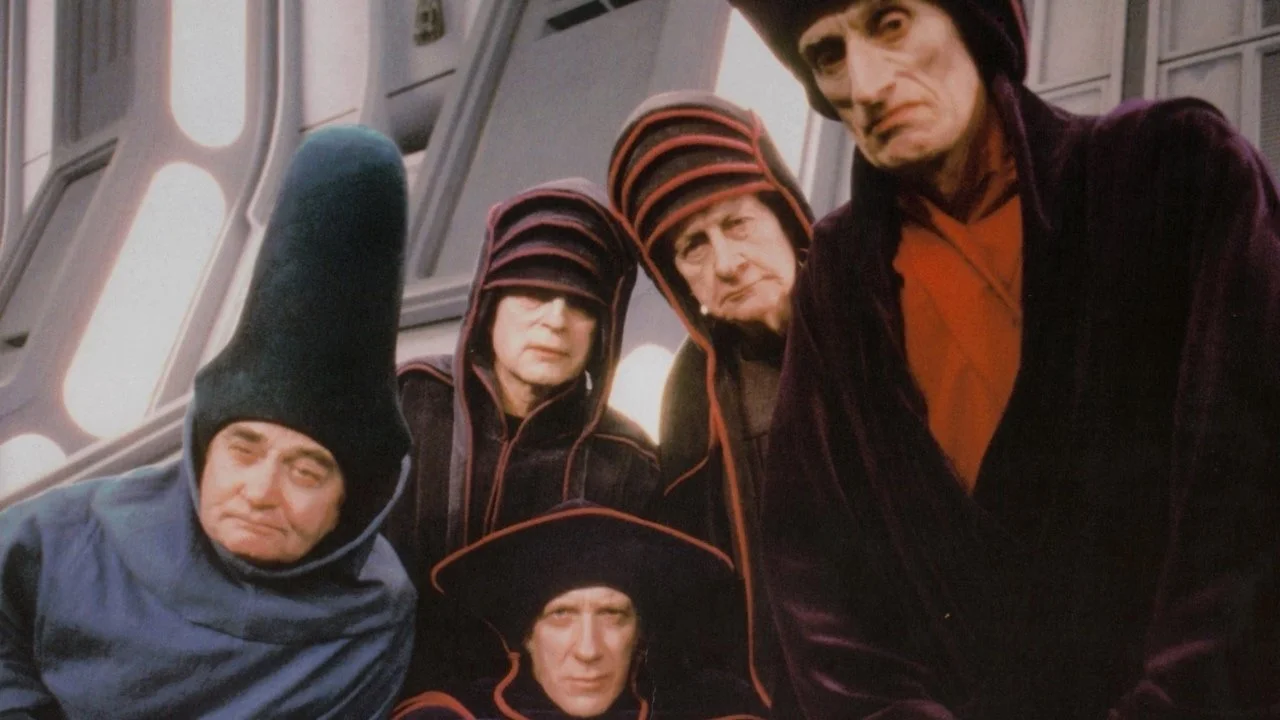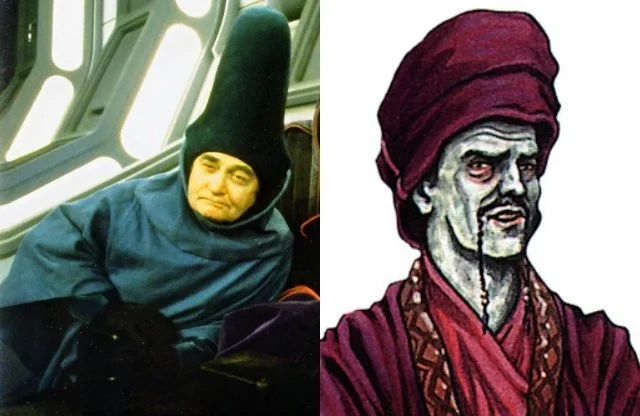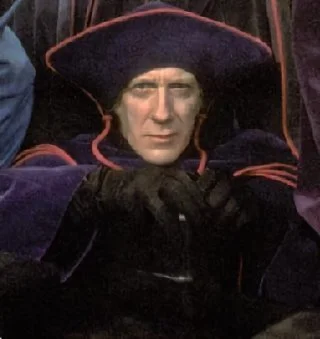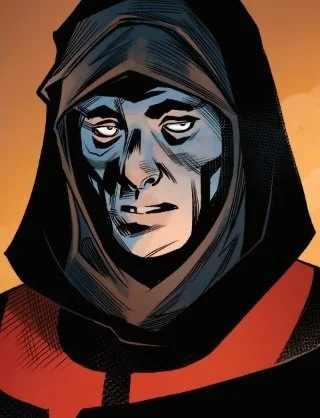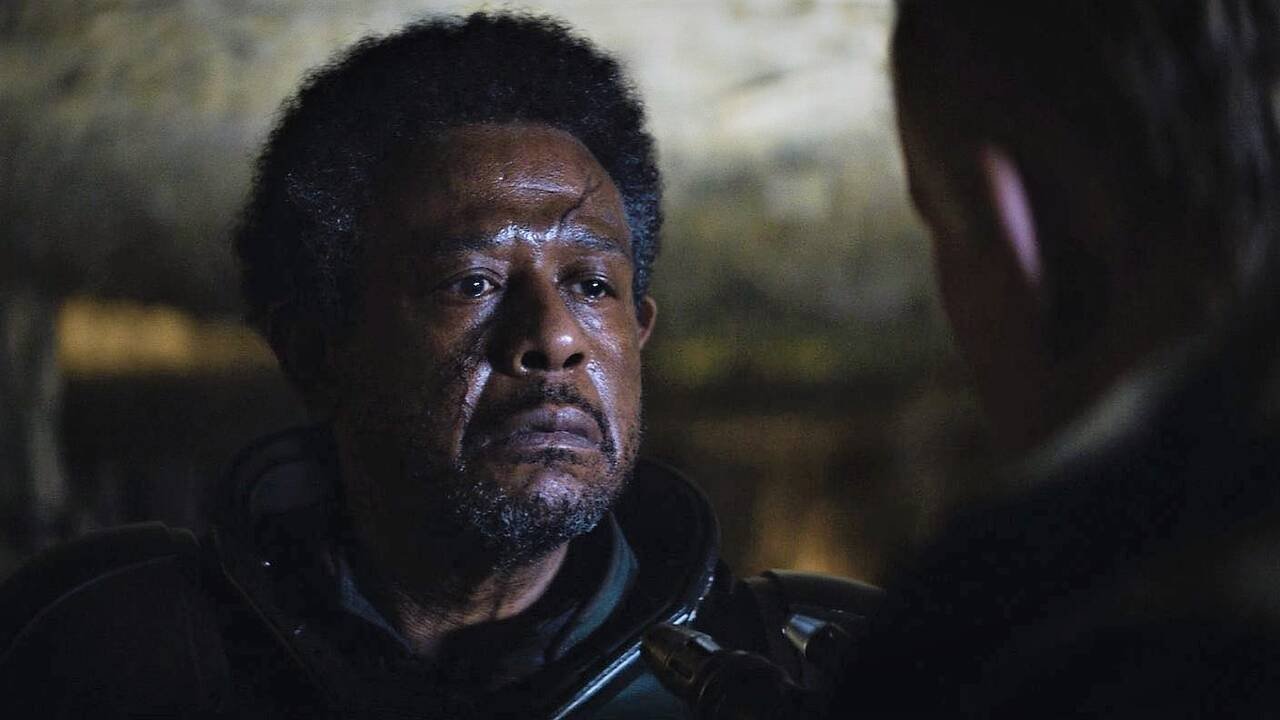Palpatine's Inner Circle, A Who’s Who Of The People That Ran The Empire
Image Source: Wookieepedia
The prologue to Alan Dean Foster's novelization of Star Wars includes this passage:
"Once secure in office he declared himself Emperor, shutting himself away from the populace. Soon he was controlled by the very assistants and boot-lickers he had appointed to high office, and the cries of the people for justice did not reach his ears."
It took more than three decades until shows like Rebels or The Bad Batch showed how the former senator from Naboo and later chancellor of the Republic more or less disappeared from public consciousness once he had declared himself Emperor.
Few had direct access to Palpatine, and he chose them based on their achievements for the Empire and their loyalty. He didn't care if this loyalty was based on actual conviction or just driven by fear of repercussions:
RELATED:
Darth Vader was, of course, one of those whom the Emperor/Sith Lord granted access to his "inner circle!" both to teach and to torture him and make him enforce the iron fist of the Empire. As were the Imperial Guards, faceless caretakers who had sworn to protect their leader from any harm or danger.
Among those whom Palpatine saw worthy enough to let them speak to him directly, as they had served the Empire well, were Grand Moff Tarkin, Grand Admiral Thrawn, Wulf Yularen, or Enric Pryde.
Then, there was an exclusive circle of beings who operated outside the strict hierarchy Palpatine had implemented to run his Empire. These beings were powerful enough to steer the empire's administrative, juridical, and military matters and ensure that only the most pressing issues were forwarded to Palpatine.
The Imperial Ruling Council
Led by a Grand Vizier, this group of bureaucrats included Palpatine's closest advisors, members of the Imperial Court, and military leaders.
The sectoral governors and over-governors reported directly to the Council, as did the various ministers. Founded shortly after the declaration of the Empire, this body remained largely unchanged until the Battle of Endor. Those still alive afterward went on to create the Imperial Future Council, which later became the Sadow Council after the Battle of Jakku.
Like most high-ranking Imperials, the members of the Ruling Council were jealous of one another, not hesitating to backstab their "colleagues" whenever possible to stay in the good fortune of the Emperor.
Palpatine's advisors made their first appearance in Return of the Jedi when they arrived on the second Death Star together with their master. The term Imperial Ruling Council was created by James Luceno for his 2014 novel Tarkin.
Maz Ameeda
Image Source: Reddit
The blue-skinned alien from the planet Champala started his political career as a senator for his homeworld and rose to the rank of Vice Chair under Chancellor Finis Valorum.
He continued to serve under Palpatine and often led the meetings in the Senate with his booming voice.
As one of the very few to know the secret Sith identity of Palapatine and after the Emperor had locked himself away from the public, Ameeda became a kind of a gatekeeper, deciding who would get an audience with Palpatine and whose message or plea was important enough to be forwarded to the Emperor.
As Grand Vizier, he formally led the Imperial Ruling Council until it was dissolved in 4 ABY.
Maz Ameeda was introduced in The Phantom Menace and appeared in the other two films of the Prequel Trilogy, as well as in several episodes of The Clone Wars and later in The Bad Batch.
Sate Pestage
Image Source:Wookieepedia
The human male became a senior advisor to Palpatine while he was still chancellor and rose to one of the members of the IRC after the end of the Clone Wars.
Aside from his cameo in Return of the Jedi, his main canon appearances are in the novel Catalyst (a prequel to Rogue One), also written by James Luceno, and in Tarkin.
Pestage's role in the Expanded Universe had been much larger, being a Grand Vizier who even became the de-facto Emperor after Palaptines death.
The character was originally intended to appear in a scene in The Empire Strikes Back as a kind of major domo to Palpatine before his role disappeared from the script.
Janus Greejatus
Image Source: Wookieepedia
Like most members of the Ruling Council Greejatus was human and had served Palpatine as an advisor before the Clone Wars and continued to do so after the birth of the Empire.
Together with his colleague Sim Aloo, he was tasked by Palaptine to acquire an ancient Sith book from the planet Ushruu, but the team of Trandoshans that Greejanus had hired for the job were all killed by a monster, and Greejanus had to confess his failure.
He died when the second Death Star exploded.
Played by an unnamed Extra in Return of the Jedi, Greejanus' name was brought back into canon in the novel Tarkin.
In Legends Greejanus was Force-sensitive and trained by Sidious to become a Dark Side Adept, but he lacks these powers in his canon incarnation.
Sim Aloo
Image Source: Wookieepedia
Born as a farmer on the planet Noomis Riga, Aloo rose to wealth and power by deceiving and murdering his neighboring farmers or claiming that they were sympathizers of the Confederacy of Independent Systems during the Clone Wars.
As a member of the Ruling Council, he began to show interest in Sith artifacts, taking explorations to acquire them together with his daughter.
While he was ruthless toward his enemies, Aloo always behaved humblely and obediently in the presence of the Emperor.
Like Pestage and Greejatus, Aloo died during the Battle of Endor. In Legends material, he was portrayed as being Force-sensitive, but there is no indication that he had such powers in current Star Wars lore.
Ars Dangor
Image Source: Wookieepedia
Dangor was another member of the Ruling Council who accompanied Palpatine to the Second Death Star and was killed in its explosion. Like most of the "inner circle", he had known and worked for Palpatine before the Clone Wars.
Although his portrayal by an unnamed Extra in Return of the Jedi indicates otherwise, other canon materials describe him spotting a fashionable mustache and preferring colorful clothing.
In Legends, it was Dengor who ran most of the day-to-day dealings of the Empire and dissolved the Senate in 0 BBY. After the death of Palpatine, he became the de-facto leader of the remnants of the Empire together with Sate Pestage and tried to rebuild the old regime under his leadership.
He was featured in Tarking and Catalyst and mentioned in the episode "Aldhani" in season one of Andor.
Kren Blista-Vanee
Source: Image Wookieepedia
Blista-Vanee joined the Ruling Council several years after its formation when he had earned Palaptine's trust by blazing hyperspace routes to the star systems in the galaxy's Deep Core.
The man who liked opera was another member of the Council, who died on the second Death Star.
Aside from his cameo appearance in Return of the Jedi, he was featured in Tarkin, where he worked with the Grand Moff and Palpatine to regain Tarkin's stolen ship, the Carrion Spike.
Yupe Tashu
Image Source: Wookieepedia
Although not a formal member of the Imperial Ruling Council, Tashu was one of Palpatine's closest advisors. He possessed no Force sensitivity but was still fond of the Dark Side, studied its history and artifacts, and later became a Force cultist.
Tashu was also one of the few who knew about Palaptine's secret identity as a Sith Lord and collaborated on his Contingency Plan and the preparations for his "rebirth" in the Unknown Regions. Before he could set these plans in motion, Tashu was killed by Gallius Rax during the Battle of Jakku.
Yupe Tashu was featured heavily in ChuckWendig's Aftermath trilogy
Gallius Rax
Image Source: Star Wars Animo
Born on Jakku, the boy lost his parents at a young age and was discovered by Palpatine after sneaking onboard his ship. Instead of just killing him, Palpatine mentored Rax, who quickly rose through the Imperial ranks and became an Admiral and commander of a Super Star Destroyer at the time of the Battle of Endor.
Rax was deeply involved in Palpatine's Contingency Plan and his role in its execution. After Palpatine's death, he became the de facto Emperor, betraying and killing everyone standing in his way.
Like Yupe Tasu, whom he had murdered shortly before Rax was killed during the Battle of Jakku.
Like the former, he was created by Chuck Wendig for his Aftermath trilogy.
Sly Moore
Image Source: starwars.com
The bald Umbaran with creepy white eyes served as the Senior Administrative Aide and Chief of Staff for Palpatine during the last years of the Republic and continued to work at the Grand Vizier's office after the declaration of the Empire. Being Force-sensitive herself and able to manipulate the minds of others, she knew about Palpatine's Sith identity.
Years later, Moore conspired to kill Vader but later allied with him, and the two traveled to Exegol. Her fate is unknown.
Moore first appeared in Attack of the Clones and then in Revenge of the Sith and was featured heavily in Marvel's Darth Vader comics.
Everi Chalis
Image Source: starwars.com
Not directly a member of the Imperial Ruling Council, the former artist and then apprentice of Count Denetrius Vidian, a wealthy mining lord, became the emissary of the group, taking their decisions to the galaxy and ensuring their proper execution.
Having committed terrible crimes in the name of the Empire, Chalis later temporarily defected to the Rebel Alliance and was even present during the Battle of Hoth. Avoiding Imperial capture, she moved to a remote planet and resumed her career as an artist.
Like Verge, Chalis made her full debut in Alexander Freed's novel Battlefront: Twilight Company after having been mentioned in the short story Bottlenecks by John Jackson Miller.
READ NEXT:
Sources: James Luceno, Tarkin (2014), Catalyst (2016); Alexander Freed: Battlefront: Twilight Company (2015); Chuck Wendig: Aftermath Trilogy (2015-2017)

